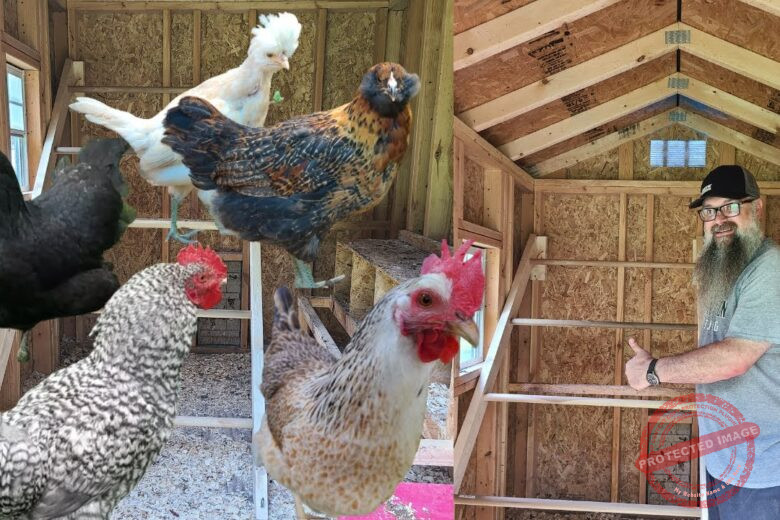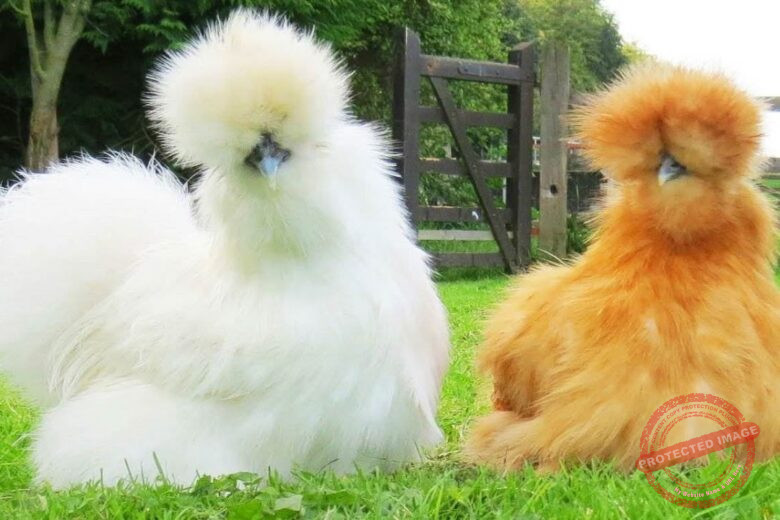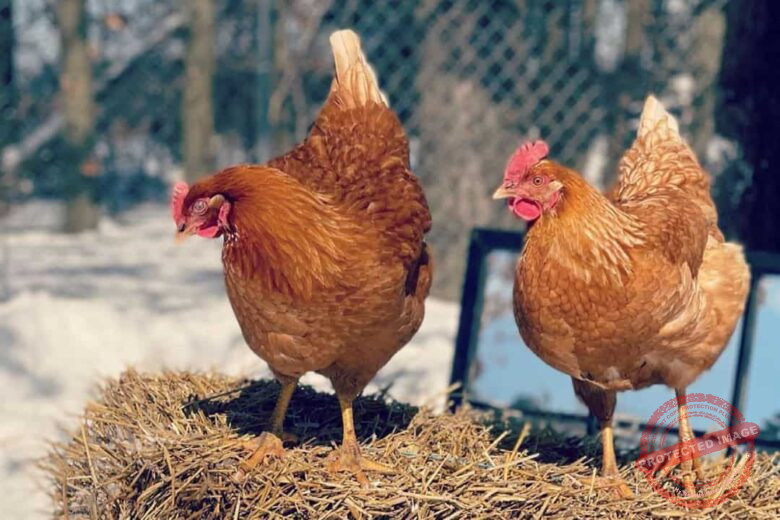If you’ve ever stood in your chicken run early in the morning with a cup of coffee in hand, watching the girls scratch around and chatter softly, you’ll know what peace feels like. It’s simple, grounding, and just plain good for the soul. Now imagine among them, one hen with soft, smoky gray-blue feathers glistening under the sunlight—like she’s made of moonlight and ash. That’s your Sapphire Gem chicken. She’s not just a pretty face, though. These birds bring personality, productivity, and a calm, confident charm to any flock.
When I first got my Sapphire Gems, I’ll admit I didn’t know what to expect. I’d heard stories—about their sweet temperaments, their lovely lavender-blue plumage, and their impressive egg-laying ability. But it wasn’t until I saw one hop up on the roost beside me, as if to say, “So, what are we doing today?” that I really got it. These chickens aren’t shy or fussy; they’re smart, curious, and easy to love. If you’ve ever wanted a breed that’s both beautiful and practical, you might just be looking at your next favorite bird.
There’s something special about raising a chicken that feels balanced—one that’s as hardworking as it is gentle. Sapphire Gem chickens fit that bill perfectly. Whether you’re just starting out or you’ve been tending coops for years, this guide will help you understand why so many farmers (myself included) can’t help but brag about them. We’ll go over their personality, egg production, and how to care for them properly. Ready to find out what makes them one of the most treasured hybrid breeds in backyard farming?
What Is a Sapphire Gem Chicken?
Sapphire Gem chickens are a type of hybrid layer originally bred in the Czech Republic. They’re a cross between a Blue Plymouth Rock and a Barred Plymouth Rock. The result? A gorgeous bird with blue-gray plumage, sometimes laced with darker feathers that shimmer in the sun.
They’re not officially recognized as a standard breed, but don’t let that fool you. These hybrids are tough, productive, and downright dependable. Most hatcheries list Sapphire Gem chickens for sale all year because they’ve become one of the most sought-after breeds for small farms and backyard flocks.
Personality and Temperament
Let’s talk about personality, because that’s where these birds really shine. Sapphire Gems are calm, friendly, and sociable. They don’t mind being handled, which makes them great for families with kids or for anyone who just enjoys sitting quietly in the coop.
Unlike some flighty breeds, Sapphire Gems don’t cause a fuss every time you walk by. They’re confident but not aggressive, curious but not nosy. I’ve seen mine wander up when I’m refilling feeders, giving me that side-eye that says, “You got snacks or what?” They’re the kind of birds that remind you why chicken-keeping is worth every early morning.
Egg Production: Plenty to Go Around
Now let’s get to the part everyone wants to know—how many eggs will they give you? Sapphire Gem hens are phenomenal layers, averaging about 250 to 300 large brown eggs per year. That’s nearly six eggs a week when they’re in their prime.
Their eggs are a lovely shade of light brown with smooth shells, perfect for baking or breakfast. And here’s something every farmer loves to hear: these hens start laying early. Around 18 to 20 weeks, they’re already filling the nesting boxes while other breeds are still figuring out their feathers.
They also tend to keep laying well through winter, especially if you give them a little extra protein and good lighting. I’ve had mine surprise me with fresh eggs even on frosty mornings when other breeds took a break.
Are Sapphire Gem Chickens Good for Beginners?
If you’re just getting started with backyard chickens, Sapphire Gems are one of the best breeds to start with. They’re gentle, easy to care for, and adapt quickly to their environment. They’re not easily startled and usually get along well with other breeds, making them perfect for mixed flocks.
New chicken owners often worry about dealing with mean hens or bullies in the coop. With Sapphire Gems, that’s rarely a problem. They’re laid-back and prefer to mind their own business—though they do like to know what’s going on.
How to Care for Sapphire Gem Chickens
Caring for Sapphire Gems isn’t complicated, but doing it right keeps them healthy and productive for years. Here’s how to keep your hens happy:
1. Feed them well.
Good nutrition is the foundation. Use a balanced layer feed with at least 16% protein once they start laying. Supplement with kitchen scraps, grains, and greens for variety.
2. Provide fresh water daily.
It sounds simple, but clean water makes a big difference. Replace it every day, especially in hot weather when bacteria grows fast.
3. Keep the coop clean and dry.
Moisture is a chicken’s enemy. Use straw, pine shavings, or sand for bedding, and clean it out regularly. Dry conditions prevent parasites and odor.
4. Allow space to roam.
Sapphire Gems love to forage. If you can, give them access to a yard or pasture where they can scratch around for bugs and seeds.
5. Protect from predators.
Their calm nature makes them less jumpy, but that also means they’re not the first to run when danger comes. Secure your coop with strong wire and lock it at night.
What Determines the Price of a Sapphire?
Before we dive into numbers, let’s talk about what really drives a sapphire’s price up or down. Think of it like buying a car — the make, mileage, paint job, and extra features all matter. The same goes for sapphires. Each stone tells its own story through color, clarity, cut, and origin. Here’s what you should know before opening your wallet.
1. Color (Hue, Tone, Saturation)
Color is king in the sapphire world. The richer and more vivid the blue, the more the stone is worth. Ideally, you’re looking for that deep royal blue that glows even under dim light — not too dark, not too washed out.
If you see green or gray undertones, the value usually drops.
Then there are fancy sapphires — pink, yellow, peachy padparadscha, even green or violet. These are judged by how pure and lively their hue is. A good padparadscha, for example, with its perfect blend of pink and orange, can outprice even high-end blue sapphires.
2. Clarity & Inclusions
All natural sapphires have something going on inside — little “fingerprints” of the earth. But the clearer the gem looks to the naked eye, the higher the price.
An eye-clean sapphire (meaning no visible flaws without magnification) is always more desirable. Some inclusions are acceptable, even charming, if they don’t affect sparkle.
However, large cracks, feathers, or cloudiness? Walk away or negotiate hard.
3. Cut & Shape
A good cut can make a sapphire look like it’s glowing from within. The cut controls how light bounces around inside the gem, showing off color and sparkle.
A poorly cut sapphire might have what’s called a “window” — a dull, see-through patch in the middle where color just disappears.
Round and oval cuts are most common, but cushion, emerald, and pear shapes can add personality. The key is balance and brilliance, not just symmetry.
4. Carat Weight & Size
Here’s the thing: bigger doesn’t always mean better. Large sapphires are rare, so their price per carat jumps quickly, but a smaller stone with richer color can outshine a dull giant.
If you’re on a budget, don’t chase carat size. Choose color quality over weight every time. A 1-carat stone with killer color beats a 3-carat that looks sleepy.
5. Treatment & Origin
Most sapphires on the market today are heat-treated — and that’s okay. Heat treatment enhances color and clarity and is widely accepted in the gem world. But untreated sapphires with great color are rarer and fetch premium prices.
Origin also affects value. Here’s a quick rundown:
-
Kashmir: The holy grail — incredibly rare and expensive.
-
Burma (Myanmar): Velvety, rich blues, often second only to Kashmir.
-
Sri Lanka (Ceylon): Bright, vivid sapphires with excellent clarity.
-
Montana (USA): Locally mined and increasingly popular, with stunning teal and cornflower blue hues.
If you can find a Montana sapphire, you get both beauty and the joy of supporting an American mine.
6. Market & Rarity
Like anything valuable, supply and demand rule the game. Certain colors — like padparadscha or color-change sapphires — are harder to find, which pushes prices higher.
Even within blue sapphires, small shifts in hue or clarity can mean hundreds of dollars difference. The rarer the look, the steeper the price tag.
What Are Typical Sapphire Price Ranges?
Prices vary wildly, but here’s a rough idea of what to expect in the U.S. market:
-
Entry-level / commercial-grade: $25 to $200 per carat — often duller colors, visible inclusions, or poor cuts.
-
Good quality / mid-range: $450 to $1,600 per carat — lively color, good clarity, ideal for fine jewelry.
-
High-end / collector grade: $4,500 to $8,000 per carat — untreated or top-quality heat-treated stones with vivid color.
-
Exceptional / rare: Tens of thousands per carat — rare hues like padparadscha, Kashmir, or large museum-grade stones.
In short, you can find sapphire gemstones for sale anywhere from $25 per carat to well above $10,000, depending on all these factors.
Which Sapphires Are Worth Buying?
Now you’re probably thinking: “Okay, but which sapphires should I actually go for?” Let’s make it simple with some smart buying strategies.
1. Decide Your Purpose
Ask yourself why you’re buying it.
For everyday jewelry? Focus on durability and beauty.
For investment or collection? Focus on origin, rarity, and certification.
Knowing your purpose helps you shop with confidence instead of emotion.
2. Aim for the “Sweet Spot” Quality
You don’t need perfection. Look for stones that balance color and clarity beautifully without the premium of being flawless.
For instance, a well-colored heat-treated sapphire often gives amazing value compared to a smaller untreated stone at triple the price.
3. Choose Trusted Origins
If you want a sure bet, look for Sri Lankan (Ceylon), Burmese, or Montana sapphires. These regions produce consistently high-quality stones.
The origin adds story, pride, and often resale value down the road.
4. Understand Treatments
Always ask: “Has this sapphire been treated?”
-
Heat-treated = common and acceptable
-
Diffusion-treated = color only on the surface, avoid
-
Untreated = rare and valuable, but costly
A transparent dealer will gladly tell you.
5. Explore Fancy Colors
Don’t limit yourself to blue. Fancy sapphires — pink, yellow, green, purple — are stunning and sometimes more affordable.
Just make sure the color is pure and not patchy. A vibrant pink or golden yellow sapphire can turn heads as easily as a royal blue.
6. Insist on Certification
Always, always buy with a certificate from a reputable gem lab like:
-
GIA (Gemological Institute of America)
-
AGS (American Gem Society)
-
IGI (International Gemological Institute)
The certificate confirms origin, treatment, and authenticity. No paper, no deal.
7. Watch the Cut — Closely
A sapphire’s cut determines its sparkle. A dull cut makes even expensive stones look flat.
Avoid gems with “windows” (pale centers) or uneven shapes. Ask to see it in natural daylight before deciding.
Example Picks to Consider
Here are a few buying scenarios you might see in the U.S. market:
-
A 1-carat vivid blue Sri Lankan sapphire, eye-clean and heat-treated — perfect for a timeless engagement ring.
-
A 2-carat lavender sapphire from Montana — less traditional, but beautiful for a unique personal touch.
-
A small untreated Burmese sapphire, brilliant and rare — ideal for collectors who value purity over size.
Each of these represents a different kind of buyer: practical, creative, and connoisseur.
Tips When Buying Sapphires in the USA / Local Markets
If you’re buying locally, here’s how to make sure you get a fair deal:
-
Shop around. Compare prices at several stores before deciding.
-
Check lighting. View the sapphire under daylight, indoor light, and LED — some stones change dramatically.
-
Bring a loupe. A simple 10x magnifier can reveal cracks or treatment lines.
-
Ask about return policy. Good dealers stand by their stones.
-
Prefer reputable sellers. Try trusted online stores like Blue Nile, Brilliant Earth, or Gem Rock Auctions, or visit Tucson Gem Show and New York’s Diamond District for variety and expertise.
-
Be cautious with cheap deals. If a sapphire looks too good to be true, it probably is — it could be glass-filled or synthetic.
A Relatable Farm Moment
I remember one morning after a big rainstorm, the whole yard was damp, and the ground was soft underfoot. My Sapphire Gem, Daisy, came running toward me, muddy feet and all, clucking like she had something important to say. Turns out, she’d found a worm and wasn’t about to share it with the others. She strutted proudly, worm dangling from her beak, looking like she’d just won a prize. That’s the kind of simple joy you get from these hens—tiny, everyday moments that make you laugh out loud.
Health and Hardiness
Sapphire Gem chickens are known for their strong immune systems and adaptability. They handle both cold and heat better than most breeds, though you should always make sure they have shade in the summer and insulation in winter.
They’re not prone to many diseases, but like all chickens, they benefit from regular health checks. Look out for parasites under the feathers and around the vent area. Keep an eye on their combs, wattles, and feet for any signs of frostbite or scaly leg mites. A little preventive care goes a long way.
Housing and Space Requirements
Each Sapphire Gem needs about 4 square feet of space inside the coop and 10 square feet in the run. Crowding causes stress, and stressed hens don’t lay well. If you want steady egg production, make sure your setup gives them room to stretch, flap, and dust bathe.
Add roosting bars, nesting boxes (one for every 3 to 4 hens), and some natural light. They enjoy perching high up at night, so make sure your roosts are secure.
Raising Sapphire Gem Chicks
Thinking about starting from chicks? You’ll be happy to know Sapphire Gem chicks are hardy from the start. They feather out quickly and handle brooder life well. Keep their temperature around 95°F the first week and drop it by 5°F each week until they’re fully feathered.
Feed them chick starter feed for the first 6 to 8 weeks, and then switch to grower feed. Always give them access to clean water, and you’ll be amazed how fast they grow into those stunning slate-blue adults.
Common Questions About Sapphire Gem Chickens
1. What color eggs do Sapphire Gem chickens lay?
They lay large, light brown eggs with smooth, hard shells—great for everyday use.
2. Are Sapphire Gem roosters aggressive?
Generally no. They’re more even-tempered than many other breeds, though every rooster has its own personality.
3. How long do Sapphire Gem chickens live?
With proper care, they live 5 to 7 years on average, sometimes longer.
4. Do they go broody often?
Not usually. Sapphire Gems are more focused on laying than sitting on eggs, so if you want chicks, use an incubator or a more broody breed.
5. Where can I find Sapphire Gem chickens for sale?
Most large hatcheries and local farm suppliers stock them year-round. Look for reputable sellers to ensure you’re getting healthy, vaccinated chicks.
Why You’ll Love Having Sapphire Gems in Your Flock
At the end of the day, raising Sapphire Gem chickens isn’t just about collecting eggs—it’s about having a flock that brings a calm joy to your farm. These hens are loyal, consistent, and easygoing. They don’t just fit in—they thrive.
When you walk out to the coop and see those glimmering blue-gray feathers shimmering in the morning light, you’ll understand why they’re called “gems.” They bring a kind of quiet beauty that makes your work feel worthwhile.
So if you’re looking to add new hens or start a flock that’s equal parts pretty and productive, Sapphire Gems might just be your next great investment. After all, isn’t it time your coop had a little sparkle of its own?



